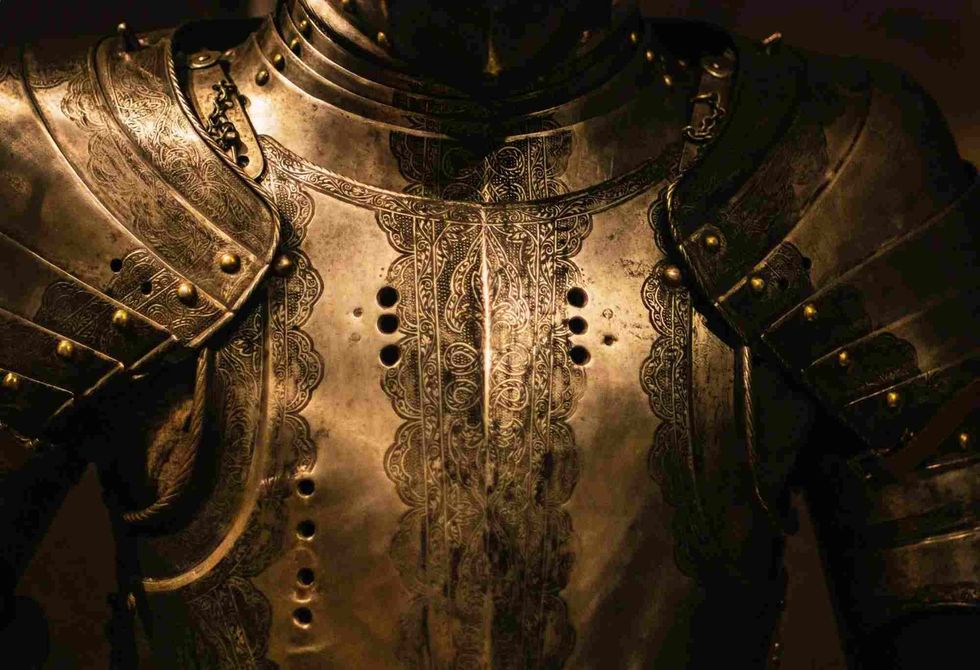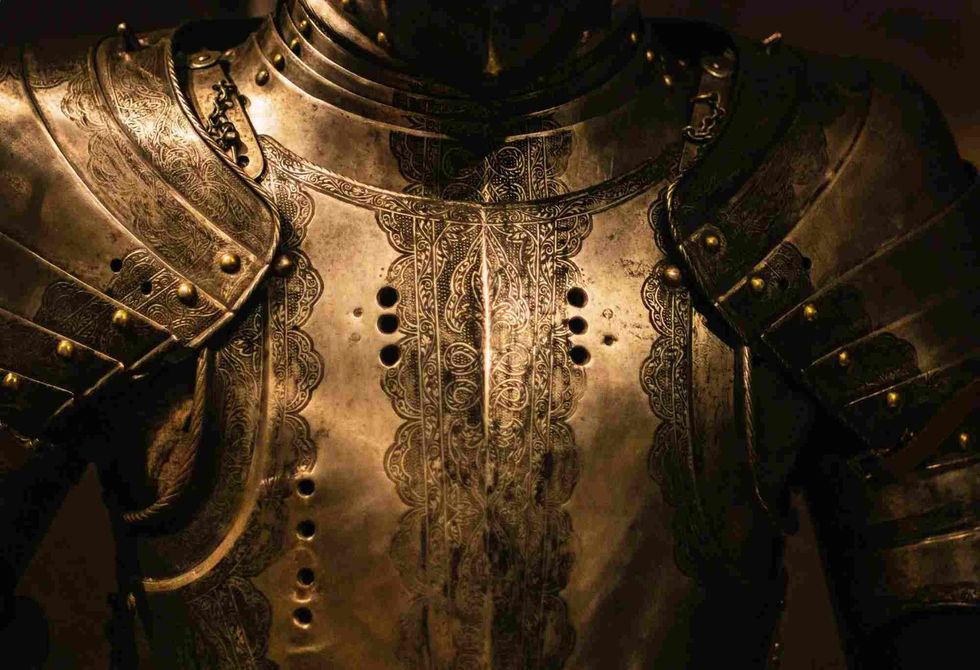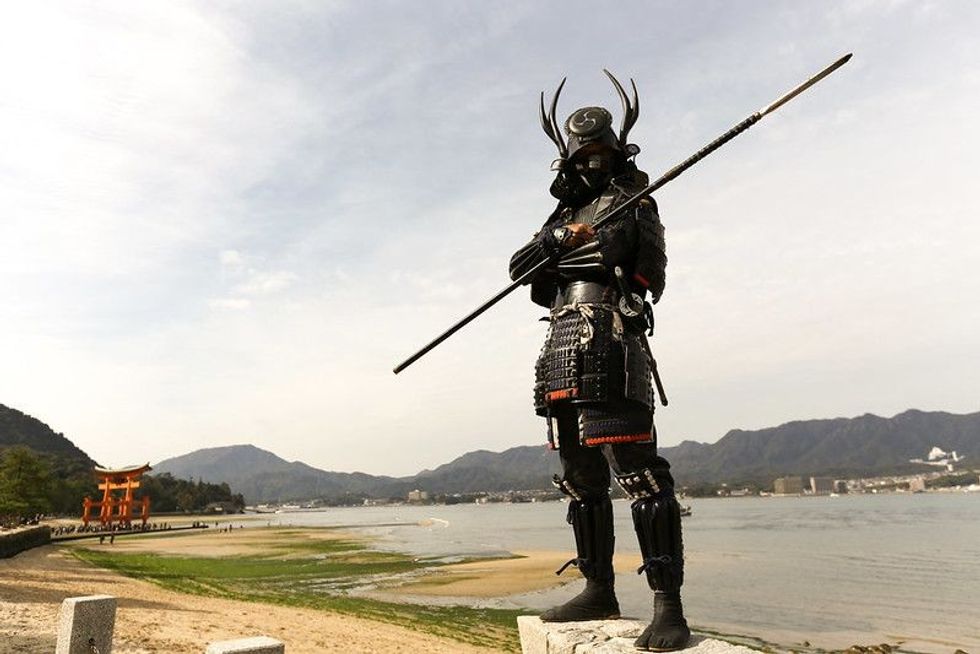A soldier is likely to carry a weapon and a shield during combat.
A weapon allows the warrior to attack, and the shield defends. In the Viking era, shields were carried by all types of Viking warriors for self-defense.
Viking soldiers were a formidable group of warriors. They were constantly defending their territories from loot and capture. The Viking was taught to attack and protect simultaneously. He or she would arrive on the battlefield armed with battle-axes, spears, knives, bows, and arrows, among other terrifying weapons.
The Vikings would also be armed with a shield. Viking shields came in a variety of styles and sizes. The Viking shield's circular form shielded the warrior from incoming strikes.
Continue reading if you are interested in learning how Viking shields were made, how Vikings used them in combat, the importance of shields in Viking society, how shields varied for different warrior ranks, and other Viking shield fun facts. For example, a shield wall made by overlapping shields was one of the most prominent combat techniques of the Vikings.
Almost all Viking shields have been recovered in some form or another. These shields have revealed a lot about the culture of the Vikings.
Interested in Viking combat and fighting style? Get acquainted with more Viking armor facts and Viking arts and crafts facts at Kidadl.
Viking Shield Cool Facts
Viking shields varied in the way they were designed. Here are some cool facts about the shields from the Viking Age.
The exact time period when the shield was invented is hard to answer. Shields have been used across the Middle Ages.
It can be traced back to the seventh century with the circular shape of a Greek hoplite, followed by the cylindrical scutum from the Romans. The Celtic shield was similar to the Roman one, but a flat one. Then came the Viking shields, which were round shields.
The Viking shields were similar in design to the Nordic shields. Archeologists uncovered these shields from the graves of Viking warriors.
The shield was placed over the warrior's body. This also revealed that the Viking shields actually had a symbolic meaning apart from being a part of the armor.
Viking warriors carried a shield that was circular in shape and made of wood. The interesting part about the shield-making was the presence of a metal boss in the center. The iron boss on the Viking shield protected the warrior's hand.
The boss was part of the Viking shields that survived in the graves. However, in 2008, an almost complete shield was uncovered by Trelleborg.
Apart from wood, the round shields also had leather straps. Some Viking shields were covered with leather.
The shield rim was embossed with iron and other metals. The boss was fixed to the shield with the help of iron nails. The nails were flattened on the shield's reverse side so as not to hurt the Viking.
The hand grip over the Viking shields was provided by a wooden plank on the reverse side. Shields were customized to reveal their owner's status and beliefs. For example, some shields were decorated with runes and symbols to show their religious beliefs.
For practical reasons, the wooden part of the shield was either painted red or painted black. In battle, unpainted wooden Viking shields risked getting wet and, thus, becoming heavy.
Viking Shield Maiden's Facts
Whether shield maidens existed in real life is still under debate. However, Scandinavian folklore does feature some formidable female Viking warriors like Hervor.
When you imagine a Viking warrior, you are likely to think of a tall, broad, bearded, and scary-looking Scandinavian man. However, pop culture has brought attention to the concept of Viking shield-maidens.
A shield-maiden was a female Viking warrior who preferred sword-fighting to stitching. These women have been mentioned in various local folklore, giving weight to this legend.
Hervor was one such shield-maiden. Angantyr's daughter, Hervor, was described as a formidable warrior who fought many in her search for the legendary sword, Tyrfing.
Her grit and determination helped her eventually win the powerful sword. These Danish legends have been passed down from one generation to another and have been a source of inspiration for many writers, like J. R. R. Tolkien.
The most promising discovery was the Birka grave. The DNA of the recovered body showed it was of a female and the grave contents, such as weapons, games, and all revealed the high status of this Viking warrior.
Viking Lamellar Shield
Lamellar is a popular body armor that was made of rectangular plates. These plates could be wooden, iron, or leather. Viking lamellar armor was extensively found in Sweden.
The Vikings' armor was designed to protect different body parts, from the chest to the knees. The armor was made of iron plates sewn onto a type of fabric such as leather.
There is a debate about whether the armor was imported to the area. Together with the Viking shields, the lamellar armor protected the warrior during the Viking Age.
Lamellar armor is quite popular when reenacting Viking battles today. People who are inspired by the Middle Ages recreate the powerful Viking battles. Using plywood, you can build your own Viking shields.
First, cut the shield into a circle of 31.5-35.4 in (80-90 cm) in diameter. In the middle, cut another smaller circle for the metal boss to be fitted. Create a shield handle with more plywood.
Make sure to properly sand the wood from the sides to avoid getting splinters in your fingers. Now fasten the sanded handle with screws and bolts on both ends.
For this, you will need to drill a hole in the handle edges. Place a metal sheet in the middle (over the middle circle) and fasten it with screws. You can place the metal in the shape of a dome.
Lastly, paint your shield with the colors of your choice. You can further customize it by drawing animal symbols on the shield. Let it dry and you are ready to recreate your own Viking battle with friends.
Torso And Body Shield For The Viking
Viking shields protected the warriors during the battle from powerful weapons like battle axes, bows, and arrows. Vikings used the shield to protect parts of their bodies, like the torso, and legs.
A Viking battle was described as cruel and vicious. Weapons helped the Vikings attack and defend their territories. But without protective gear like shields, it would have been impossible to win a battle.
The dimensions of most shields were crafted to suit the warrior's body. A small shield would not be effective to protect the Viking from the enemy blades. The shield would ideally be around 31.5-35.4 in (80-90 cm) in diameter and 0.2-0.5 in (6-12 mm) thick.
Laminated wooden planks were used to construct their shields. Vikings shield varied in quality. In some cases, shields had iron rims to increase their durability and sturdiness, which were necessary to ward off the enemy's attacks.
An important combat technique among the Vikings was the shield wall. Vikings during battle would stand together and create a shield wall. The Vikings were able to defend their lineup by standing in rows of 5-10 with everyone's shields overlapping.
The line formation was well thought out, as too many lines would make it difficult for the warriors to move. The Vikings would shield their torsos and bodies in this formation. They would wield their spears through the gaps without exposing themselves.
This Viking way was an efficient method of stopping the enemy from causing extensive damage to the warriors. The combined force of the shield wall would push the incoming army back.
Here at Kidadl, we have carefully created lots of interesting family-friendly facts for everyone to enjoy! If you liked our suggestions for Viking shield facts, then why not take a look at Viking axes facts, or Viking battles facts?








